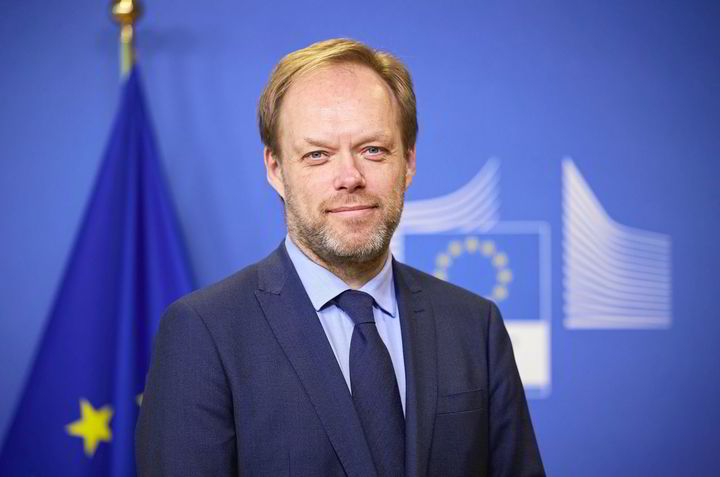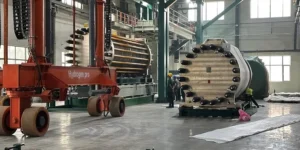Fifteen hydrogen projects to receive €1.25bn of EU innovation funding after signing grant agreements

Fifteen innovative hydrogen-related projects will receive more than €1.25bn of grants from the EU after signing contracts to receive the money, the European Commission has announced.
Most of the awards had been announced in July, but the size of the funding has only just been revealed.
All recipients have now signed their grant agreements with the European Climate, Infrastructure and Environment Executive Agency (CINEA), the implementing body of the EU Innovation Fund, from which the money will be issued, according to a statement issued on Friday afternoon by the Commission’s Directorate-General for Climate Action.
Recipents of the total of €1,255,896,994 (according to Hydrogen Insight calculations), are as follows (in order of size of grant):
1) H2 Green Steel – H2 Green Steel – Sweden (€250m)
A hydrogen-based green steel project in northern Sweden, which will include 700MW of electrolyser capacity (the largest in Europe).
2) FFI Holmaneset Green Ammonia Production (GAP) – Fortescue Energy – Norway (€203,766,000)
See separate article here.
Article continues below the advert
3) IRIS – Motor Oil – Greece (€126,790,000)
This project will capture carbon at a current Motor Oil steam methane reforming unit, which will then be combined with green hydrogen to produce green methanol. This would mean that at least some of the grey hydrogen currently produced at the site will become blue.
4) Green Meiga (Green Methanol in Galicia) – Iberdrola – Spain (€122,917,845)
An e-methanol plant in Spain developed by Iberdrola that will use a combination of PEM, solid oxide and alkaline electrolysers, as well as both enzyme-based and direct air carbon-capture technologies.
5) electroMethanol-Rhône – Elyse Energy – France (€115,190,750)
A project developed in France by Elyse Energy, which plans to produce renewable hydrogen from an electrolyser as a feedstock for synthetic methanol, with the carbon captured from a nearby cement plant.
6) Topsoe SOEC Stack Module Factory – Topsoe – Denmark (€94m)
A factory being built by Topsoe in Denmark to produce its solid oxide electrolysers. The company has already taken FID on a 500MW factory in the country, but has not yet made a decision on scaling up to 5GW of capacity.
7) Tarragona Network Hydrogen – Repsol – Spain (€62,491,697)
A pressurised alkaline electrolyser project developed by Repsol in Spain, which will sell both renewable hydrogen and by-product oxygen to offtakers.
8) ELYAS – Bosch – Germany (€51,926,000)
A project by Bosch in Germany to industrialise a “smart electrolysis module”, combining its electrolysis stack with automotive-based power electronics, control units and sensors.
9) HydrOxy Hub Walsum – Iqony – Germany (€49,212,730)
A 150MW PEM electrolyser project based in the German city of Duisburg, powered by existing renewables assets and a battery. Offtake of the green H2 will mainly come from a local steelmaker, with some supply to transport and other industries. The project will also supply waste heat to the local district heating system.
10) Triskelion – Forestal del Atlántico – Spain (€48,846,672)
A green methanol facility in Spain developed by chemicals and power producer Forestal del Atlántico, based on green hydrogen and captured carbon from an existing combined heat and power plant. Triskelion will also liquefy and store oxygen produced during electrolysis.
11) Green Ammonia Linz (GRAMLI) – Verbund – Austria (€48.5m)
A PEM electrolyser-based plant in Austria, which will follow the electricity grid’s emissions intensity to flexibly use more power when the share of renewables on the grid is high.
12) E-fuel pilot – Nordic Electrofuel – Norway (€40m)
A Norwegian e-fuel facility capturing CO2 from a ferro/silicon-manganese plant and combining it with hydrogen from an alkaline electrolyser.
13) Seaworthy – Floating Power Plant A/S – Denmark (€26m)
A prototype semisubmersible platform combining wave energy, wind turbines and hydrogen production, H2 storage and fuel cell technology.
14) Giga-Scales – Agfa – Belgium (€11,031,000)
A project in Belgium by Agfa to scale up and automate the production line of its Zirfon membrane for alkaline electrolysers.
15) HyNCREASE – De Nora – Germany (€5,224,360)
A project to design, construct and validate more efficient and automated manufacturing lines for electrolysers and fuel cells.
Missing projects
Six of the hydrogen projects set to receive funding in the original list unveiled in July are not listed as having signed grant agreements.
Two withdrew their applications: H2 Maasvlakte, which was due to install a 100MW PEM electrolyser at the Port of Rotterdam in the Netherlands; and H2Sines, a 400MW green hydrogen project in Portugal that was due to ship liquid H2 to the Port of Rotterdam.
The latter project — that had been co-developed by Shell, Engie and others — was at the centre of the scandal that led to the resignation of long-standing Portuguese prime minister António Costa.
The status of the four other projects yet to sign grant agreements is unclear. They are:
EnergyHys: A project in the Netherlands developed by TotalEnergies, which aims to use the green H2 produced to decarbonise hard-to-abate industries and also supply mobility.
Asturias H2 Valley: Developed by EDP subsidiary H2 Aboño, this renewable hydrogen facility will be located inside an existing coal power plant in Spain.
Green H2 Atlantic: A 96MW pressurised alkaline electrolysis system at a decommissioned coal power plant in Portugal, developed by a consortium led by EDP. The project has also received Horizon Europe funding worth €30m and is expected to cost more than €76m in total.
Columbus: A project by Engie subsidiary Electrabel to capture CO2 from lime production in Belgium and combining it with green H2 to produce e-methane, which will then be either blended into the gas grid or sold to industrial users or the transport sectors.
The EU Innovation Fund is financed by revenues from the bloc’s Emissions Trading Systems (ETS).
Despite not being an EU member state, Norway is eligible for the funding due to its participation in the ETS and other climate activities.





